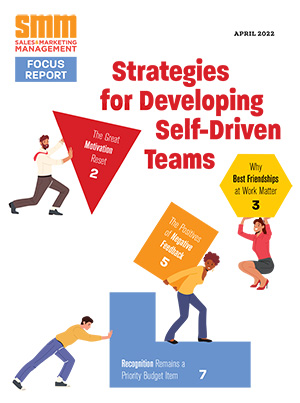Despite the increasing buzz around inbound marketing, smart sales and marketing professionals know they cannot get by on just inbound methods alone. As the attention has shifted to inbound marketing, outbound marketing has faded to the background. That isn’t to say that outbound marketing is dead, but outbound tactics from the last century are not enough today. Savvy prospects are building walls around themselves to filter out irrelevant and spammy messages, and outbound marketers need to adjust their tactics if they want to find an open door, or even a crack in the window, to get their messages to prospective customers. It is time to leave random spray-and-pray methodologies behind and adopt the data-driven outbound marketing tactics of the 21st century.
Not only will real-time data modernize outbound marketing tactics, it will also optimize them so sales and marketing professionals can work more efficiently and effectively. Sales and marketing teams can benefit from using real-time data to:
Build context– Looking for prospects and leads strictly based on geography, industry and title is no longer enough. Beyond these basic demographics, sales professionals should dig deeper to find prospects based on specific topics and arm themselves with timely news and trends for use in their first conversations with targets. For example, a sales professional can now identify the director of information security at a retail company based in Chicago and also be prepared with information about the latest data breaches affecting point of sale systems and whether that particular retailer or its competitors were compromised.
Prioritize potential customers– Once prospects are identified, data signals can help sales teams segment their prospects based on the likelihood that they will be receptive to conversations about specific products or services. For example, if a company is expanding into Asia, this could indicate a prime opportunity for a global video conferencing solutions provider to start conversations. Rather than focus on other companies that might already have global operations and a video conferencing service, or companies that are only operating domestically and have lesser need for such a service, the conferencing provider can prioritize this particular expanding target because chances are, global video conferencing services will be needed here, the company isn’t likely already working a supplier, and sales conversations will likely be more successful.
Be in the moment– Timing is critical in sales and marketing scenarios, making real-time data that much more valuable. Beyond signals such as global expansion, sales teams should identify even more specific real-time selling triggers, such as a C-level executive change. The first 90 days of a new executive represent a prime selling time, and sales professionals want to be the first in the door to have those conversations. Because event-triggered techniques can generate six times the response rate of non-event-triggered approaches, real-time event triggers in sales and marketing should become standard practice.
Determine the traits of the best customers– Building a repository of data on the prospects that have converted into the best customers will help sales and marketing professionals identify similar attributes in future targets, allowing them to create an ideal profile for the best types of prospects to go after. Understanding what has worked best in the past can help sales teams focus on activities with targets that will have the highest probable return, instead of having to start from scratch.
Automate efforts– Instead of relying on a static list of prospects that requires manual updates, sales and marketing teams should adopt solutions that will analyze real-time data for them, update databases and notify them of signals, triggers or someone meeting the ideal profile criteria. Instead of spending time knee-deep in data management, these tools will enable sales and marketing professionals to do their jobs – engaging with prospects and customers – more effectively.
To bring outbound marketing into the 21st century and give it a bright future, marketers need to couple it with data. With this added layer of intelligence, outbound marketing strategies and tactics – and sales and marketing professionals – will be more effective. The benefits are too great for marketers and sales professionals to ignore data-driven techniques and rely only on random and untargeted direct mail, email, advertising and cold-calling campaigns.
Victoria Godfrey is the chief marketing officer of Avention, which offers business-to-business data about customers and prospects. Prior to joining Avention, she spent five years running her own marketing and research company, Godfrey Research.


